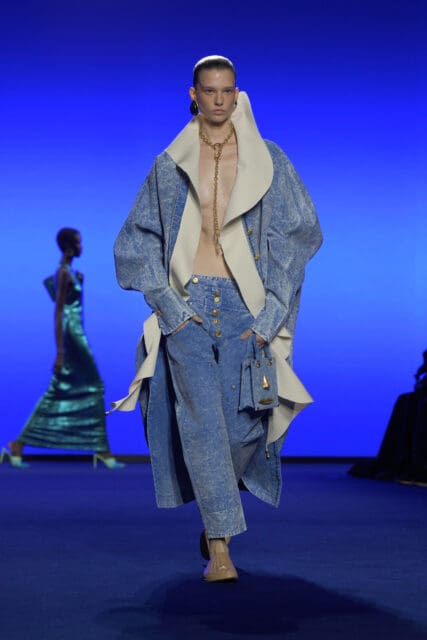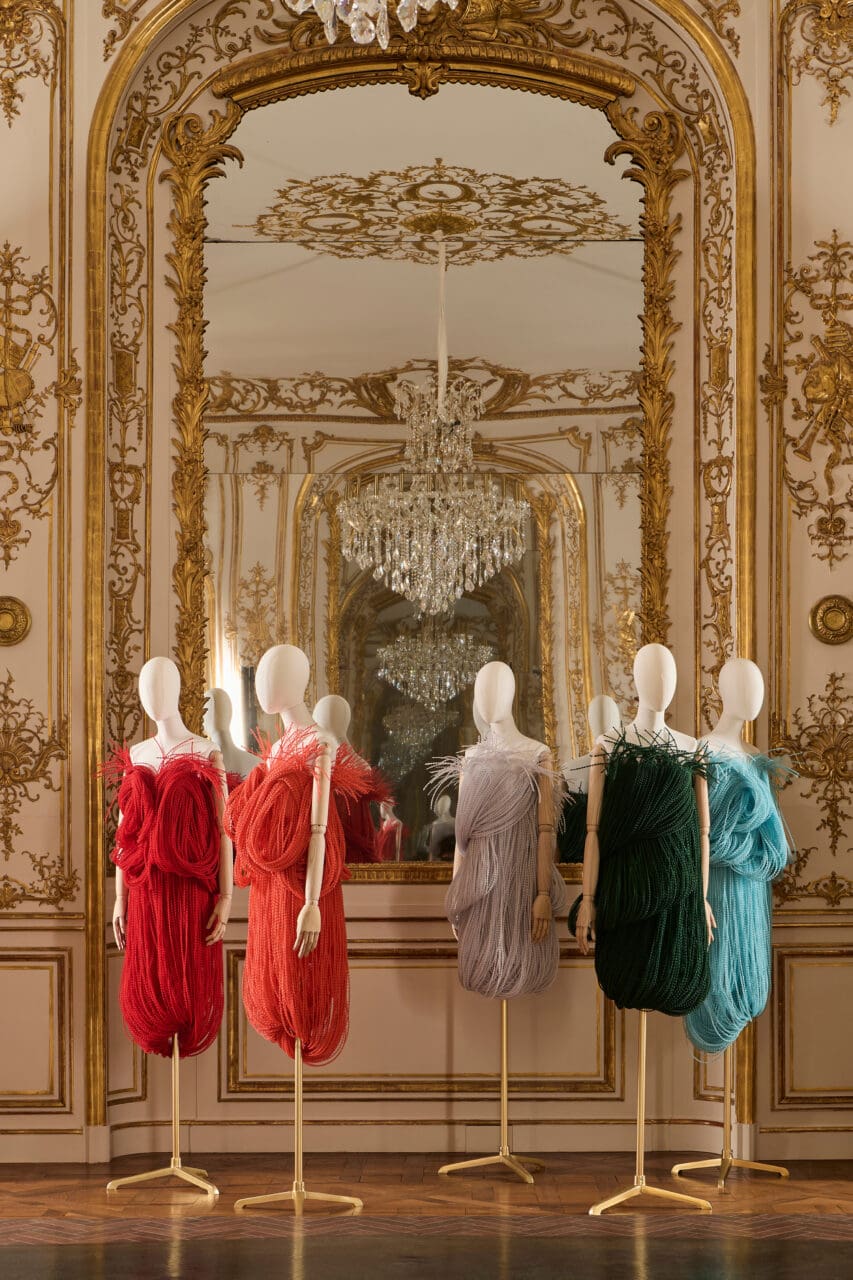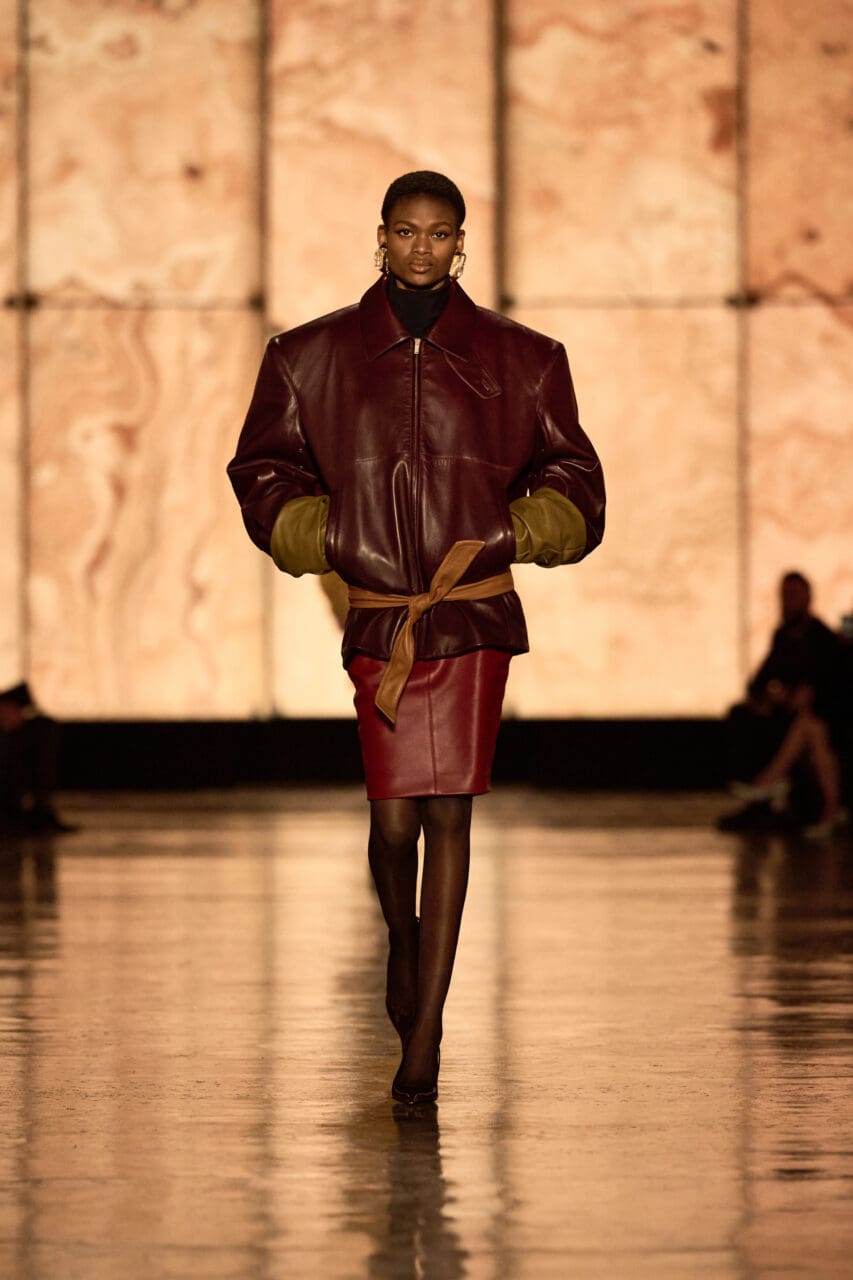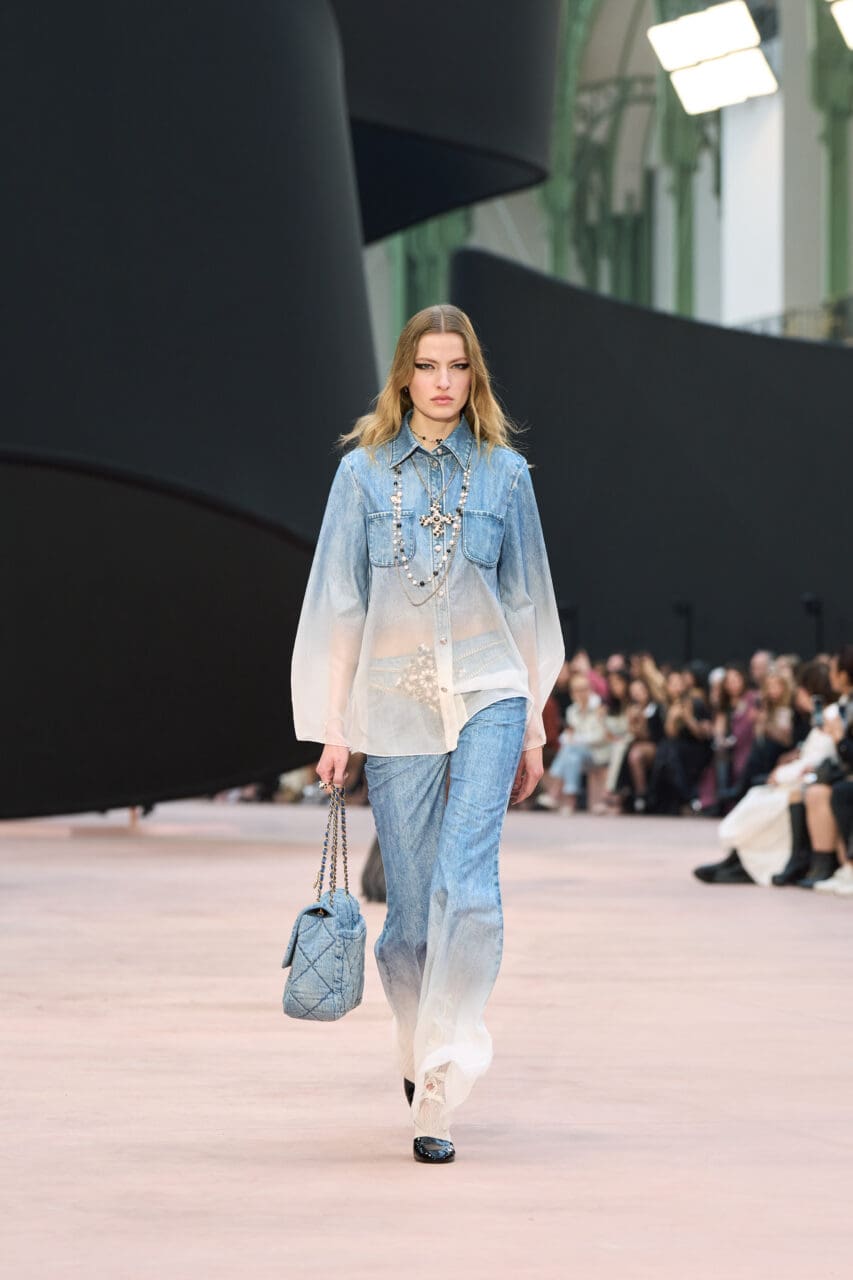Outside this venue by Place de la Republique, a stunt motorcyclist was pulling somersaults on the sidewalk—even the fashion fans waiting to see Cardi B swiveled their phones in admiration. Inside, shortly afterward, Andreas Kronthaler pulled off a trick that was just as impressive: He moved this collection into an appealing new phase that was both distinctly independent of the house’s founder but also deeply in sync with her spirit and vision.
The collection was called Calibrate, and it started with what Kronthaler called a retuning. For the first time since (I think) fall 2014, it was dedicated solely to womenswear. This fundamentally changed the emphasis for a line that had long offered clothes the genders could freely (if sometimes daringly) swap. “But these are clothes that are built for a woman, not a man, to wear,” he said. Also for the first time in ages, a few period touches apart, it looked like there were no overt historical stories or references. “No, for once. It’s just clothes, clothes that I think symbolize a very powerful, feminine woman, which I think we are looking for and need more than anything,” said Kronthaler.
There has been a broader runway reassessment of feminine sexiness at play this season, and refreshingly no orthodoxy has emerged, because cookie cutter won’t cut it in such subjective and myriad territory. Vivienne Westwood was always Kronthaler’s muse and subject, but now, her absence real—“But she is still here, everywhere, around”—he was ready to apply some of the great technical codes of the house to a broader constituency.
The collection featured multiple subversions of bourgeois classics, focusing on construction over surface. A wrap dress in pale lilac was rippled with tumultuous layers of irregular drape. A one-shoulder layered check dress with a scalloped hem and a track-pants tie at the neckline was technical-boho. A blue wool jacket was given a powerfully wide shoulder and a drunken cut that lurched most woozily at the extended skirt that fell from between its two vents. Knits and crepes was drawn across the body in essentially conventional ways, but with an elaboration of attitude achieved by an emphasis of scale and a skewing of angle. There was the occasional easy gesture, such as the cutout at the bottom of one knit dress, but more often Kronthaler was dressing complication within simplicity.
It’s been eight years since Kronthaler’s name was added to the marquee billing of this line: Before, it was named Vivienne Westwood Gold Label, and in fact two of the looks today were made of an upcycled lining from that period. This afternoon, more than ever before, Kronthaler etched his identity to the forefront of this part of the Vivienne Westwood offer—because there is still the second collection showing via look book through the studio in London. As Kronthaler put it: “I’ve always been referring, you know: Would she like it? Is this what she would do? What would she choose? But then, in the end, also less so now.” Changing things up and forging forward seems absolutely appropriate to the Westwood tradition.
Editor
Luke LeitchCredit
Lead image: Isidore Montag / Gorunway.com






